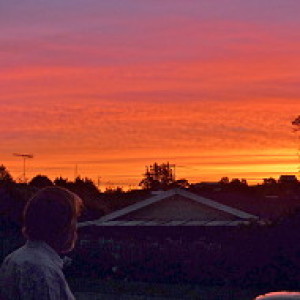Papango
This is the common Maori name for the New Zealand scaup, also known as the black teal.
I took the boys for a play around down at Western Springs Lake, where there are many different water birds. Saw, and photographed a number including some (like this one) which I have not previously photographed this year. The boys tolerated my obsession well enough, managing not to damage each other in their exuberance.
I searched for some info on this bird and copy below (for the interested reader) some of what I got from the nzbirdsonline.org.nz site.
New Zealand scaup are gregarious diving ducks common throughout New Zealand. Compact and blackish, they are quite unlike any other resident duck species. Dark and squat with a rounded profile, they often occur in large flocks, floating with cork-like buoyancy. Scaup are diving ducks and spend a lot of time underwater, where they can travel considerable distances.
Both sexes are dark-plumaged, but are easily distinguished. The male has dark black-brown plumage with iridescent blue-green head and wings, and lighter mottling on the chest and underparts. His iris is yellow and bill blue-grey. The female is a duller chocolate brown, paler on her underparts. Her iris is brown and bill grey, normally with a ring of white feathers at the base. Juvenile resemble females until 12 weeks-old when the male iris colour becomes yellow
In my opinion this is a male.
New Zealand scaup are widely but patchily distributed throughout the North and South Islands. They are found on dune lakes in Northland and Manawatu, and on inland lakes in Waikato, Taupo, Rotorua and Hawke’s Bay. In the South lsland they are common on West Coast lakes, north Canterbury waterways (including Christchurch), and eastern and southern high country and hydroelectric lakes. They are common on large, deep, freshwater lakes, including hydro-electric lakes, and are becoming increasingly common on shallow lowland lakes, slow flowing rivers and salt water. They are not found on Stewart Island, and are no longer present on Chatham Islands.
Scaup often congregate in sheltered areas near willows or reed beds, moving as wind conditions change; although they have favoured locations. They are considered non-migratory despite being capable fliers. Their numbers can fluctuate greatly on otherwise preferred lakes, suggesting at least some localised seasonal movements.
The New Zealand scaup population was estimated at 20,000 birds in the 1990s. This may have increased. Populations apparently declined during late 1800s and early 1900s due to land clearance, associated hydrological changes, predation and hunting. Adults and chicks are vulnerable to predation during nesting and chick-rearing which may result in low breeding success. Predator control and provision of suitable feeding and breeding habitat has led to population expansion.
The nest is well concealed on the ground close to the water. Nests may be partially open above, or covered, or have a tunnel leading to a concealed chamber. The nest is a tidy bowl consisting of the surrounding materials, and lined with a layer of down. Breeding mainly occurs between October and March. They nest solitary or in a loose colony. Only females incubate and care for young, but solitary males, or groups of males are often reported close to breeding sites. Chicks often form crèches.
There have been few studies on the behaviour or ecology of scaup. They are social, and can form dense rafts especially in autumn and winter and are often associated with other species particularly coots, shoveler and crested grebes. Aggressive displays occur between courting males. Several males attend females until a bond has established, the bonded male will defend the female and they separate themselves from the group. Pairs form at the breeding site and last only until the female begins nesting when the bond apparently breaks.
Scaup obtain most of their food by diving. Prey items include snails, chironomid larvae and caddisfly larvae. Plant material is probably taken also.
If you look large you can make out the right foot under the water.

Comments
Sign in or get an account to comment.


